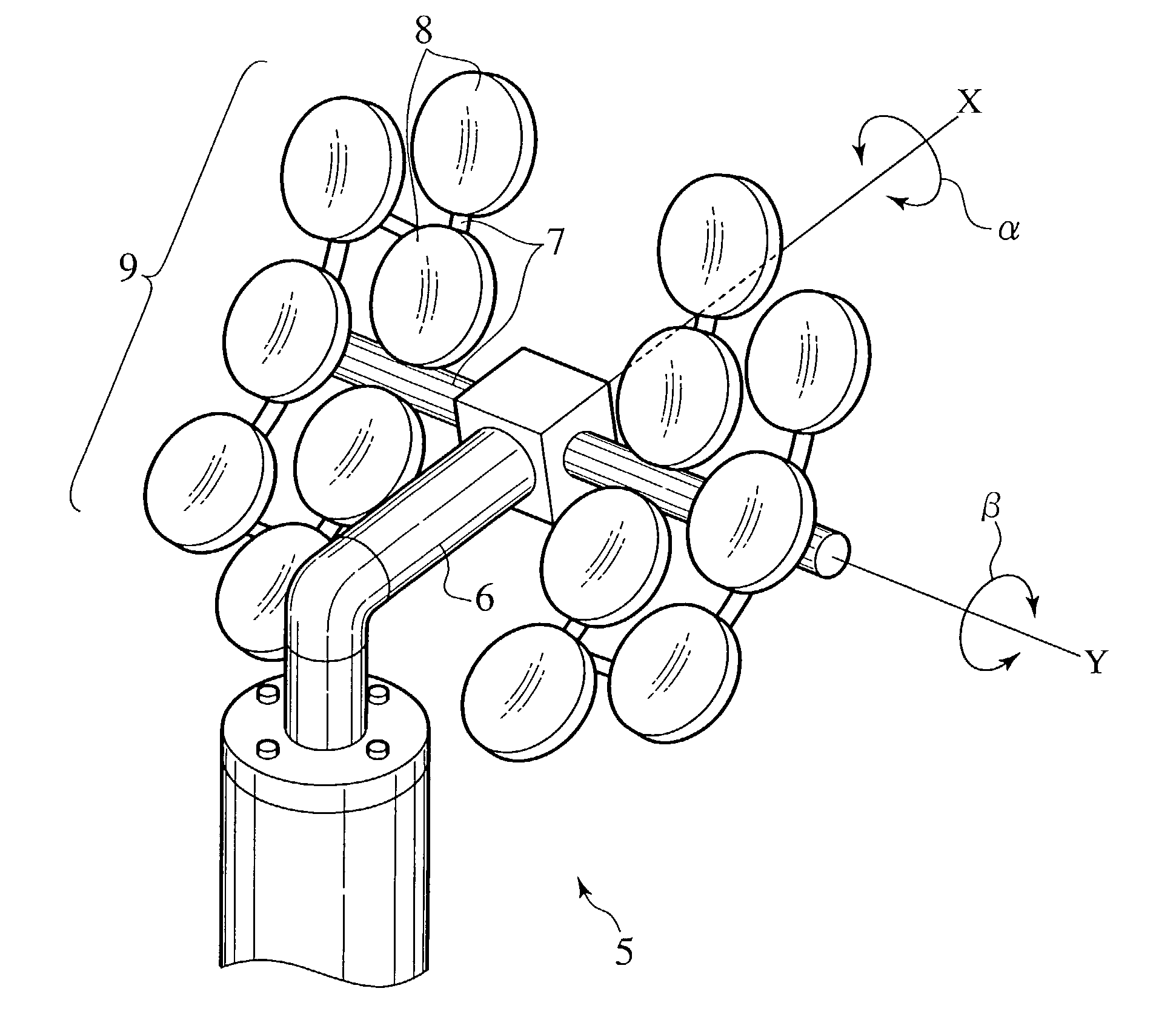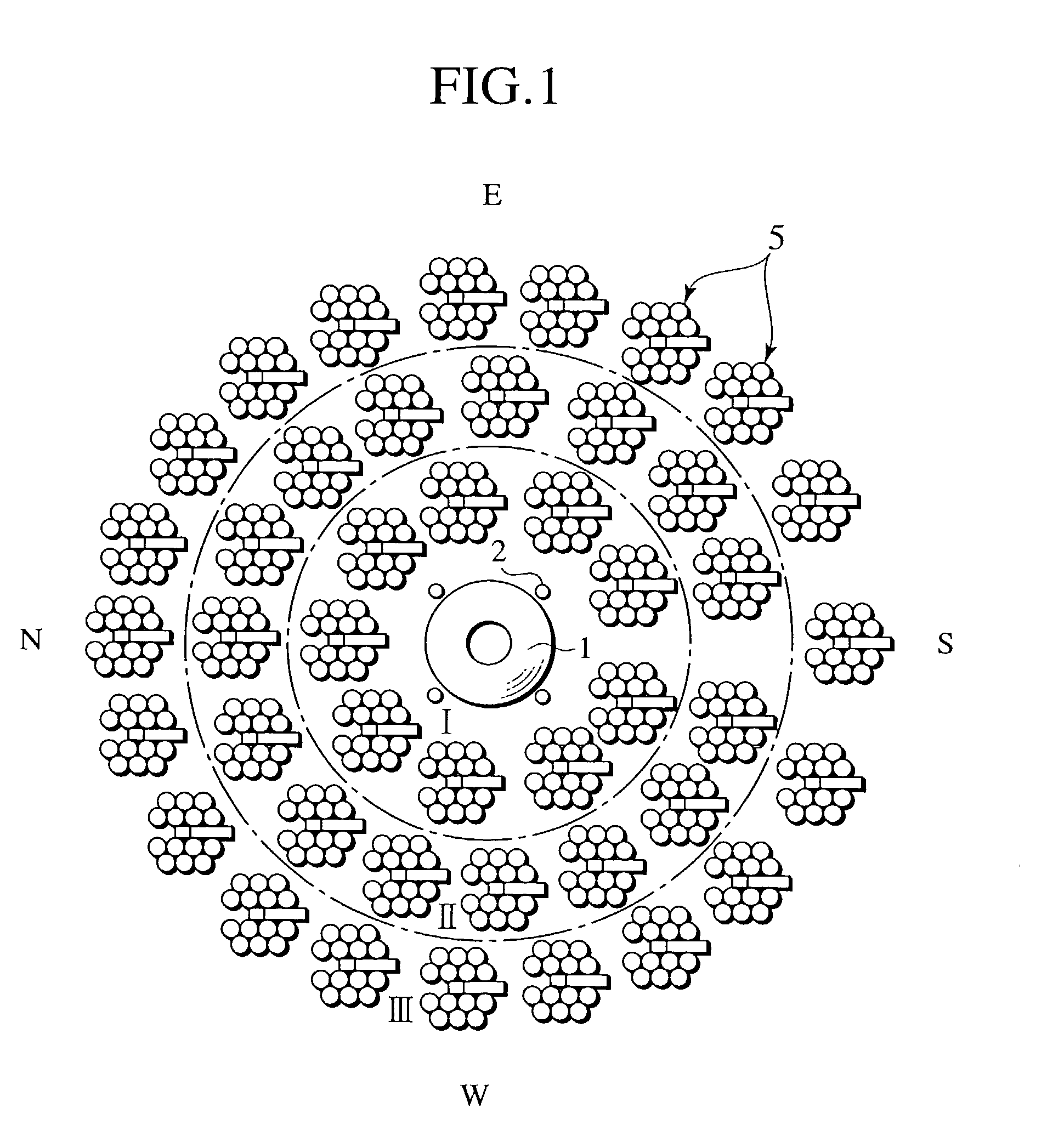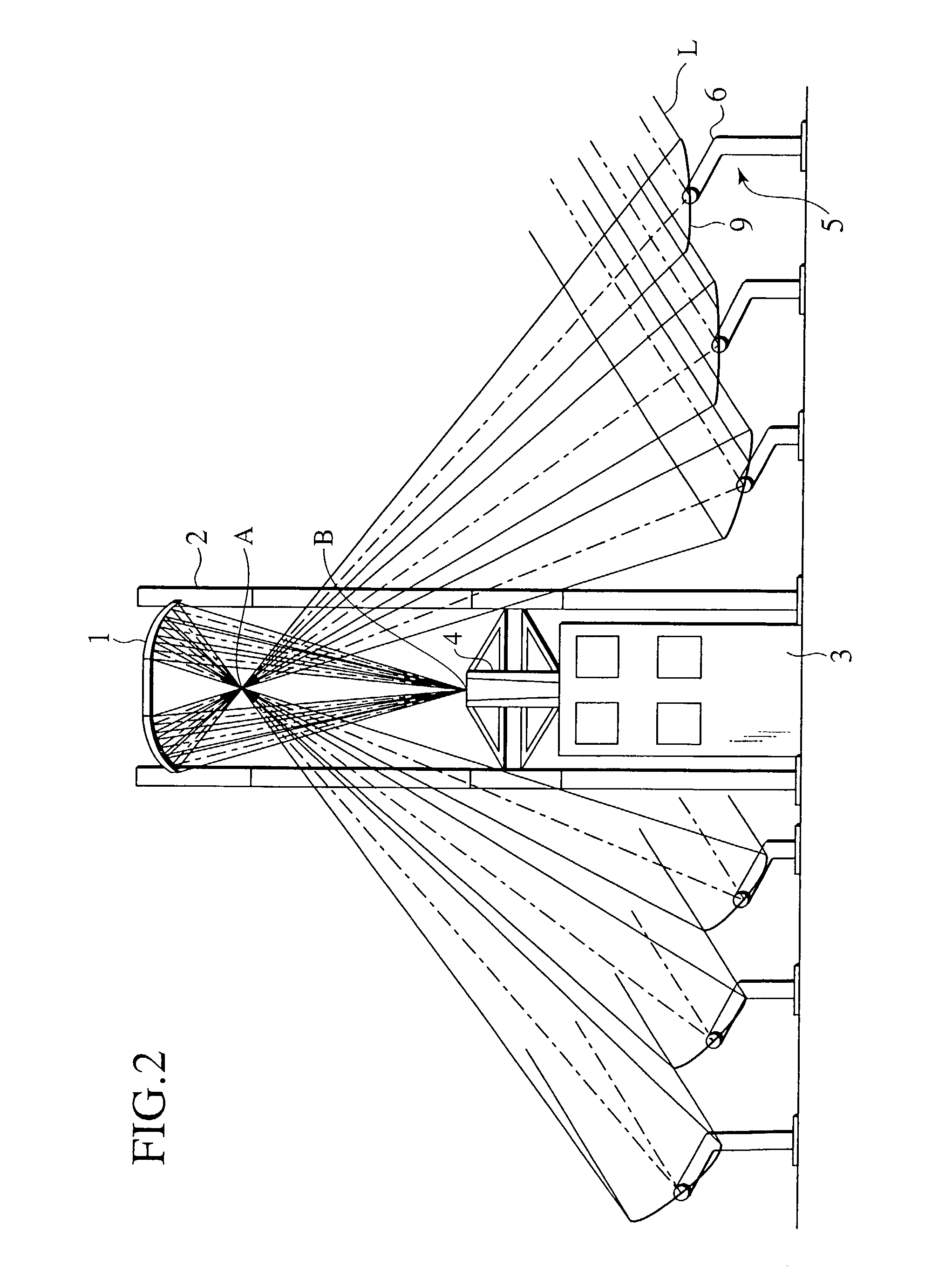Heliostat for sunlight concentration system and method of controlling the same
a technology of sunlight concentration system and heliostat, which is applied in the direction of optical radiation measurement, comonautical navigation instruments, instruments, etc., can solve the problem of enormous structure of the sunlight concentration system
- Summary
- Abstract
- Description
- Claims
- Application Information
AI Technical Summary
Benefits of technology
Problems solved by technology
Method used
Image
Examples
first embodiment
[0021]FIGS. 1–7 illustrate the present invention. Reference numeral 1 denotes an elliptic mirror positioned at a predetermined level with support towers 2, being oriented downward. The mirror surface shape of the elliptic mirror 1 constitutes a portion of an ellipsoid, below which a first focal point A and a second focal point B exist as a concentration portion. A thermal conversion facility 3 for converting sunlight L into thermal energy is established below the elliptic mirror 1. A converging mirror 4 in a tapered tube shape is provided on an upper portion of the thermal conversion facility 3. A number of heliostats 5 are arranged on the ground around the thermal conversion facility 3, encircling the elliptic mirror 1. Sunlight reflected from each heliostat 5, after only passing through the first focal point A, invariably reaches the thermal conversion facility 3 by way of the second focal point B and the converging mirror 4. This allows independent control of the main axis, curva...
third embodiment
[0035]FIG. 9 illustrates the present invention. A fork 16 rotatable in an azimuth direction H is mounted to an upper portion of a support pole 15 of a heliostat 14. A frame 17 rotatable in an altitude direction V is mounted to the fork 16. A plurality of concave mirror elements 8 are mounted to the frame 17, defining a concave mirror 9. The concave mirror 9 is controlled in orientation using an azimuth sensor and an altitude sensor not shown so as to constantly reflect and focus sunlight L to a fixed concentration portion. The angles of the concave mirror elements 8 are variable in a direction relating to the diurnal motion of the sun detected by the azimuth and altitude sensors not shown. The heliostat 14 of this embodiment is simple in structure because of its alt-azimuth mounting which allows rotation in the azimuth direction H and the altitude direction V. The other components, functions and effects are identical to those of the above embodiments, and the redundant description t...
PUM
 Login to View More
Login to View More Abstract
Description
Claims
Application Information
 Login to View More
Login to View More - R&D
- Intellectual Property
- Life Sciences
- Materials
- Tech Scout
- Unparalleled Data Quality
- Higher Quality Content
- 60% Fewer Hallucinations
Browse by: Latest US Patents, China's latest patents, Technical Efficacy Thesaurus, Application Domain, Technology Topic, Popular Technical Reports.
© 2025 PatSnap. All rights reserved.Legal|Privacy policy|Modern Slavery Act Transparency Statement|Sitemap|About US| Contact US: help@patsnap.com



